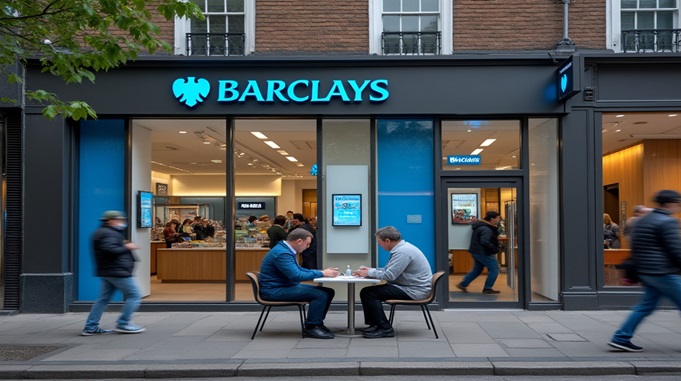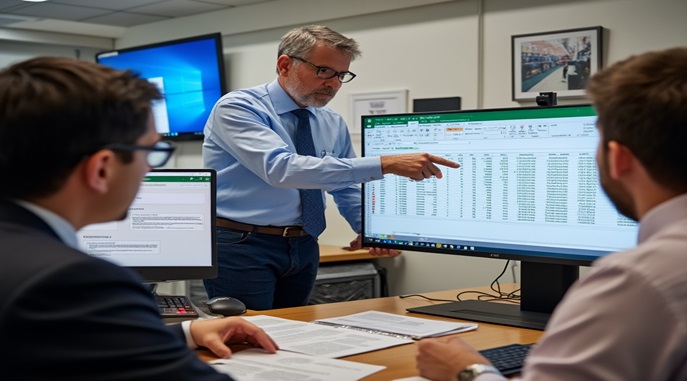
Additional Restrictions Grant (ARG)
The Additional Restrictions Grant (ARG) provides additional funding for local authorities subject to national lockdown or Tier 3 restrictions, to support businesses that have had their trade affected by the restrictions. This includes:
- closed businesses that don’t pay business rates
- businesses that have not been required to close, but are still severely impacted
Each local authority has the discretion to establish business grant schemes or other business support as best fits their area.
Additional Restrictions Grant Guidance
Additional Restrictions Grant Guidance for Local Authorities (updated 17 March 2021 to include £425m top-up from 1 April 2021)
- This guidance is intended to support Local Authorities in administering the Additional Restrictions Grant (ARG) to provide direct business grants and wider business support.
- Enhanced business support settlements were first provided to areas entering Tier 3 restrictions for the first time from 14 October 2020. With the 31 October 2020 announcement that national restrictions would be reintroduced, the scheme was extended and formalised into the Additional Restrictions Grant to support all Local Authorities or Combined Authorities. This Additional Restrictions Grant guidance applies from 14 October 2020.
- This guidance is issued by the Secretary of State for Business, Energy and Industrial Strategy to Local Authorities in England.
- Local Authority enquiries on this measure should be addressed to businessgrantfunds@beis.gov.uk. Businesses seeking information should refer to the Government’s business support website: https://www.businesssupport.gov.uk/
Introduction
- On 31 October 2020, the Government announced the introduction of additional support for Local Authorities under national and Tier 3 restrictions.
See announcement: https://www.gov.uk/government/news/furlough-schemeextended-and-further-economic-support-announced
- On 5 January 2021, the Government announced that a further £500 million would be made available for Local Authorities through a top-up to the Additional Restrictions Grant: https://www.gov.uk/government/news/46-billionin-new-lockdown-grants-to-support-businesses-and-protect-jobs
- On 3 March 2021, the Government announced that a further £425 million would be made available for Local Authorities, through a conditional top-up to the Additional Restrictions Grant from 1 April 2021: https://www.gov.uk/government/news/budget-2021-sets-path-for-recovery
- The scheme is called the Additional Restrictions Grant (ARG) and is administered by business rate billing authorities in England.
- The ARG funding scheme aims to support businesses severely impacted by coronavirus restrictions when most needed. Funding was first made available in Financial Year 2020-2021 and can be used across Financial Years 20/21 and 21/22. However, Local Authorities are encouraged to distribute funding to businesses who require support as soon as possible.
10.This document provides guidance to Local Authorities about the operation and delivery of the ARG scheme.
11.For the purposes of this guidance, ARG funding will refer to Local Authorities as recipients, acknowledging that funding may be paid to Combined Authorities on behalf of Local Authorities in some limited cases. Combined Authorities will be subject to the same conditions and obligations under this guidance as Local Authorities.
12.Funding was originally made available to eligible Local Authorities at the point the Local Authority first entered Tier 3 restrictions in October 2020. Local Authorities may have accessed additional enhanced business support settlements at this time. These settlements became part of the Additional Restrictions Grant.
13.Areas that agreed this support include: Liverpool City Region, Lancashire, Greater Manchester, South Yorkshire, West Yorkshire, Warrington and Nottinghamshire.
14.Funding was formalised into the Additional Restrictions Grant when national restrictions were announced on 31 October 2020. Under the Additional Restrictions Grant, Local Authorities received an initial one-off lump sum payment amounting to £20 per head in each eligible Local Authority when Tier 3 or widespread national restrictions were imposed, except where agreed otherwise in areas set out in paragraph 13.
15.Local Authorities received an allocation of the £500 million top-up to the ARG scheme in January 2021, as a result of further national restrictions being imposed. This allocation was based on a per-head calculation.
16.Local Authorities will receive an allocation of the £425 million top-up announced in the 2021 Budget, subject to Local Authorities spending their existing allocations of ARG by 30 June 2021.
17.The second top-up of £425 million of ARG funding will be allocated to Local Authorities from 1 April 2021, when conditions of the funding are met. This funding will be allocated based on a per-business calculation.
18.All Local Authorities in England are eligible for the Additional Restrictions Grant, subject to conditions being met to receive an allocation of the second funding top-up of £425 million.
19.Further top-up funding may be allocated at the discretion of Government.
20.Local Authorities can use ARG funding for business support activities. This may primarily take the form of discretionary grants, but Local Authorities could also use this funding for wider business support activities.
How will the grant be provided?
21.Government will issue Local Authorities funding, in line with the following guidance and the grant offer letter sent to Local Authorities, for the cost of the Additional Restrictions Grant (using a grant under section 31 of the Local Government Act 2003). Local Authorities will be responsible for delivering the funding.
22.Local Authorities are business rate billing authorities in England. They are responsible for making payments to businesses and will receive funding from Government.
23.Funds that have not been distributed by Local Authorities by 31 March 2022 will be subject to recovery. For the avoidance of doubt, Local Authorities need to manage their application and payment process to achieve all spend by 31 March 2022 as payments after this date will not be allowed in any circumstances.
24.As part of their application process for the scheme, all businesses will be required to self-certify that they meet all eligibility criteria.
25.We are committed to meeting the New Burdens costs to Local Authorities for this scheme. A New Burdens Assessment will be completed, and funding then provided to Local Authorities.
26.Local Authorities should allocate funding through business support grants or through wider business support measures. All funding provided under this scheme should provide direct support to businesses.
27.In taking decisions on the appropriate level of grant, Local Authorities may want to take into account businesses outside of the business rates system, businesses that have not received any other grant support, the level of fixed costs of the business, the number of employees the business has, whether it is unable to trade online and the consequent scale of coronavirus losses.
28.The grant amounts given to individual businesses will be subject to subsidy allowances.
Exclusions to Additional Restrictions Grant funding
29.Businesses that have already received grant payments that equal the maximum permitted levels of subsidy will not be eligible to receive funding.
30.For the avoidance of doubt, businesses that are in administration, insolvent or where a striking-off notice has been made, are not eligible for funding under this scheme.
31.ARG funding should not be used as a wage support mechanism, for capital projects that do not provide direct business support, or to fund projects whereby Local Authorities are the recipients.
Who will receive this funding?
32.Previous guidance for the Additional Restrictions Grant indicated that businesses must have been trading before relevant restrictions were introduced in order to be eligible. This is no longer the case. All businesses that are trading and meet other eligibility criteria may apply to receive funding under this scheme. There is no starting date from which businesses must have been trading in order to qualify for grant funding.
33.For the purposes of this grant scheme, a business is considered to be trading if it is engaged in business activity. This should be interpreted as carrying on a trade or profession, or buying and selling goods or services in order to generate turnover. Fully constituted businesses in liquidation, dissolved, struck off or subject to a striking-off notice are not eligible under these conditions.
To help further, some trading indicators are included below that can help assess what can be defined as trading for the purposes of the grant schemes.
Indicators that a business is trading are:
- The business has staff on furlough
- The business continues to trade online, via click and collect services etc.
- The business is not in liquidation, dissolved, struck off or subject to a striking of notice or under notice
- The business is engaged in business activity; managing accounts, preparing for reopening, planning and implementing COVID-safe measures
This list of indicators is not exhaustive and Local Authorities must use their discretion to determine if a business is trading.
34.In previous schemes, Local Authorities have been encouraged to utilise an application process. For the avoidance of doubt, applications are now required under this scheme for new applicants.
35.Local Authorities will need to run a new application process for first-time applicants and must be satisfied that businesses that have previously received related grants under this scheme continue to meet the eligibility criteria for the ARG if further grants are awarded. As a minimum, Local
Authorities must hold the following information on all applicants:
- Name of business
- Business Trading Address including postcode
- Unique identifier (preferably Company Reference Number (CRN)) if applicable. If not applicable, VAT Registration Number, SelfAssessment/Partnership Number, National Insurance Number, Unique Taxpayer Reference, Registered Charity Number will also beacceptable)
- High level SIC Code
- Nature of Business
- Date business established
- Number of employees
- Business rate account number (if applicable)
- Cumulative total of previous funding received under all COVID-19 grants schemes
36.In addition, the application process should also enable Local Authorities to carry out the required pre-grant fraud checks (including unique identifier), as well as the minimum data reporting requirements set out in Annex A.
37.For the initial allocation of ARG, Local Authorities were provided an allocation of £20 per head, unless otherwise negotiated (see paragraph 13).
38.For the first top-up of ARG, Local Authorities were provided with a per-head allocation from the £500 million funding available.
39.For the second top-up of ARG, Local Authorities must meet certain conditions to be eligible for an allocation from the £425 million funding available.
40.Local Authorities have until 30 June 2021 to meet all necessary conditions and prove that they have spent or made a validated attempt to spend 100% of their first two ARG allocations combined.
41.Local Authorities will be asked to provide evidence of their spending and validated attempts to spend their ARG allocations. Further guidance on these conditions will be provided in FAQs.
42.Funding is to be provided from 1 April 2021 on a per-business basis to ensure that Local Authorities can target funding fairly and directly at business support.
43.Where a Combined Authority has received ARG allocations on behalf of Local Authorities, the Combined Authority will be required to evidence that they and the constituent Local Authorities meet the conditions outlined in paragraphs 40 and 41 in order to access the £425 million top-up.
44.The Local Authority must call or write to the business, stating that by accepting the grant payment, the business confirms that they are eligible for the grant schemes. This includes where Local Authorities already have bank details for businesses and are in a position to send out funding immediately, or where the Local Authority is sending a cheque to a business.
45.Businesses will need to notify their Local Authority if they no longer meet the eligibility criteria for additional grants (for example, if they become insolvent or have maximised subsidy allowances).
Will grants be subject to tax?
46.Grant income received by a business is taxable. The Additional Restrictions Grant will need to be included as income in the tax return of the business.
47.Only businesses which make an overall profit once grant income is included will be subject to tax.
48.Payments made to businesses before 5 April 2021 will fall into the 2020/21 tax year. Payments after 6 April 2021 will fall into the 2021/22 tax year. Unincorporated businesses will be taxed when they receive the grant income.
Managing the risk of fraud and payments in error
49.The Government will not accept deliberate manipulation and fraud. Any business caught falsifying their records to gain additional grant money will face prosecution and any funding issued will be recovered, as may any grants paid in error.
50.Local Authorities must continue to ensure the safe administration of grants and that appropriate measures are put in place to mitigate against the increased risks of both fraud and payment error. In this respect, grant administrators should supplement existing controls with digital tools to support efficient, appropriate and accurate grants awards.
51.For the avoidance of doubt, Local Authorities are required to undertake prepayment checks for all Additional Restrictions Grant payments. This is a stricter position than that taken for previous COVID-19 business support grant schemes. These checks are required to be undertaken before any payments are issued to businesses, and can be commenced in advance of 1 April 2021.
This requirement is not limited to new applicants and should look at both the company and the company’s bank account.
Company check
52.The Government Grants Management Function have waived the annual fee and made their digital due-diligence tool, Spotlight, available to Local Authorities to support the administration of COVID-19 emergency grants until 30 June 2021. Use of Spotlight (or an equivalent tool) or enhanced checks to support pre-award due diligence is required.
53.Spotlight complements existing pre-award due-diligence checks and highlights areas of risk to inform grant-making decisions, through fundamental (basic) due diligence checks. In particular, Spotlight can quickly and easily flag where organisations have recently become inactive to support authorities review the ongoing viability of recipients prior to making awards.
54.Spotlight can also provide enhanced due diligence, through a paid-for service, and grant administrators are encouraged to consider the benefits of enhanced due diligence. Local Authorities should discuss their digital tool requirements with the Government Grants Management Function at: spotlightlocalauthority@cabinetoffice.gov.uk
Bank account check
55.The Government Counter Fraud Function has worked in partnership with Experian to introduce two new complementary products to assist public bodies in addressing residual fraud risks when dispersing funds for the COVID-19 financial support schemes by addressing their residual fraud risks.
These tools will allow Local Authorities to:
- verify the bank accounts of companies in receipt of these business grants; and
- provide insight into whether the company was trading at the relevant date for these grants.
56.These tools are available via the National Fraud Initiative (NFI) and can be used for both pre- and post-payment checks. They apply to both registered companies (at Companies House) and unregistered companies such as sole traders. For further information and to access the tools, please email helpdesk@nfi.gov.uk
57.Local Authorities can utilise the following tools (or equivalent) to undertake the required company and bank account pre-payment checks: Companies House, Experian (either directly or NFI tool), NAFN, Mint, Cifas, TransUnion “call” validate tool, Equifax Equip “report” tool, Spotlight, rent/mortgage statement or lease agreement, utility bills, building and content insurance premiums.
58.The Bank Account Verification Tool is widely available to Local Authorities, and we would recommend use of the tool to mitigate the risk of business impersonation fraud.
Pre- and post-event assurance
59.All Local Authorities are required to follow this guidance and conduct activity to provide assurance that the grants have been paid out in line with the eligibility and subsidy allowance conditions for these schemes.
60.The general principle applies that Local Authorities are responsible and accountable for the lawful use of funds under Section 151 of the Local Government Act 1972. The Section 151 Officer within the Local Authority is required to exercise their duties in line with the Chartered Institute of Public Finance and Accountancy (CIPFA) guidance, ensuring their oversight of the proper administration of financial affairs within the Local Authority, including these grants.
61.Any funding not spent will need to be returned to BEIS within 30 days of the completion of the reconciliation exercise.
62.Local Authorities must be satisfied that all subsidy allowance conditions have been fully complied with when making grant payments.
63.To deliver this assurance requirement, Local Authorities must have pre- and post-payment assurance plans in place for this grant scheme. Local Authorities must ensure these plans are in place as soon as possible and can be provided to BEIS when requested. The plans must set out the actions and checks Local Authorities will undertake to ascertain regularity of payments.
The plans need to cover the minimum two pre-payment checks (company and bank account) for grants to be paid, but also the post-payment assurance checking regime that the Local Authority will introduce to identify irregular payments. The Spotlight tool now includes the functionality to add schemes pre- or post-award.
64.In addition, Fraud Risk Assessments should also be undertaken for the grant scheme and comprise part of the assurance plan. To support Local Authorities in developing their risk assessments the Department will provide risk assessment templates tailored to the relevant funds.
65.The Government Grants Management Function and Counter Fraud Function will support Local Authorities to carry out post-event assurance work to identify high-risk payments and to estimate and measure the likely incidence of fraud and error that has occurred in the scheme. This requires statistically significant sample testing of key residual risks to assess the level of fraud / error that has arisen from the residual aspect of identified fraud risks. Post-event assurance is therefore dependent upon a detailed fraud risk assessment being undertaken for the scheme. Guidance will be made available to Local Authorities to support the development of Post Event Assurance Action Plans.
66.Where checks discover that payments have been made in error or have been claimed as a result of fraud, any initial recovery action will need to be undertaken by the Local Authority.
Monitoring and reporting requirements
67.Local Authorities must retain necessary data and BEIS will undertake regular data collection exercises. This reporting enables accurate monitoring, evaluation, and assurance of business support grant payments.
68.Further details on Post Payment Monitoring requirements are outlined in Annex A.
69.Local Authorities will be required to provide data in order to allow reporting by Parliamentary constituency. BEIS will work with Local Authorities to facilitate such reporting.
70.Local Authorities will be required to provide a monthly report to the Department comprising an update on their Fraud Risk Assessments and pre and post-payment assurance activities as they are delivered over the lifetime of each of these grants separately. The Department will provide a reporting template in due course.
71.If Local Authorities detect any fraud that is attempted or actual, whether it is local, or organised, large scale, systematic or crosses Local Authority boundaries then they must report it in real time to the dedicated inbox at NAFN National Anti-Fraud Network (intel@nafn.gov.uk). This is so Government can build up a full picture of what is going on and get vital information and alerts back to Local Authorities in real time, this also feeds into the wider intelligence network on counter fraud within Grants.
- If a case is categorised as organised, large scale, systematic or crosses Local Authority boundaries by NAFN, they will pass the case to NATIS who investigate serious and organised fraud on behalf of BEIS.
- Local Authorities may be contacted for further information to assist with lines of enquiry being pursued.
- NATIS may determine that the case is not something they could pursue and will return it to the Local Authority making the original referral. In these cases, the LA should try and secure repayment from the debtor through all reasonable and practicable steps.
- Where a Local Authority is taking the lead in investigating fraudulent activity where the attempted or suspected fraud is local (rather than organised, large scale, systematic or crosses Local Authority boundaries), they are expected to instigate the recovery of the grant themselves. If a referral is made to NAFN for consideration of investigation, where the Local Authority does not have the resources to investigate, then any attempts that have been made to recover funds, should be included in the referral to NAFN. Local Authorities may wish to pursue referral of the case to local police, however this is at their discretion.
- A referral should still be made to NAFN where a Local Authority is investigating a suspected or actual fraud to enable NAFN / NATIS to interrogate their systems to identify any links to other cases and to identify possible links to organised crime groups.
Update to COVID-19 business grant subsidy allowance
77.The EU State aid rules no longer apply to subsidies granted in the UK following the end of the transition period, which ended on 31 December 2020.
This does not impact the limited circumstances in which State aid rules still apply under the Withdrawal Agreement, specifically Article 10 of the Northern Ireland Protocol. The United Kingdom remains bound by its international commitments, including subsidy obligations set out in the Trade and Cooperation Agreement (TCA) with the EU. BEIS Guidance for public authorities explaining the subsidies chapter of the TCA, World Trade Organisation rules on subsidies, and other international commitments can be found here: https://www.gov.uk/government/publications/complying-with-theuks-international-obligations-on-subsidy-control-guidance-for-publicauthorities
78.On Thursday 4 March new subsidy allowances were established for the COVID-19 business grants schemes, on the basis of the principles set out in Article 3.4 of the TCA.
79.From Thursday 4 March Local Authorities must apply the updated scheme rules set out in this guidance document.
80.The updated scheme rules set out in this guidance document do not apply retrospectively. Therefore, where a Local Authority has previously rejected an applicant’s application before Thursday 4 March 2021 on the grounds that the applicant had reached previous scheme limits, the Local Authority must not revisit this decision. However, Local Authorities may accept applications submitted from 4 March 2021 from eligible applicants that are now within scheme limits as a result of the increased subsidy allowances. Updated COVID-19 business grants subsidy allowances provided on the basis of the TCA
81.The following scheme rules are to be applied to COVID-19 business grants on the basis of the EU-UK Trade and Co-operation Agreement (TCA).
82.The below scheme rules should be applied to applicants at the level of economic actor, which is defined as an entity or a group of entities constituting a single economic entity regardless of its legal status, that is engaged in an economic activity by offering goods or services on a market.
83.There are three subsidy allowances for this scheme set out below: Small Amounts of Financial Assistance Allowance, the COVID-19 Business Grant Allowance and the COVID-19 Business Grant Special Allowance.
Small Amounts of Financial Assistance Allowance
84.Grants may be paid in accordance with Article 3.2(4) of the TCA, which enables an applicant to receive up to a maximum level of subsidy without engaging Chapter 3 of the TCA. This allowance is 325,000 Special Drawing Rights, to a single economic actor over any period of three fiscal years, which is the equivalent of £335,000 as at 2 March 20211. An applicant may elect not to receive grants under the Small Amounts of Financial Assistance Allowance and instead receive grants only using the below allowances available under this scheme.
COVID-19 Business Grant Allowance
85.Where the Small Amounts of Financial Assistance Allowance has been reached, grants may be paid in compliance with the Principles set out in Article 3.4 of the TCA and in compliance with Article 3.2(3) of the TCA under the COVID-19 Business Grant Allowance (subsidies granted on a temporary basis to respond to a national or global economic emergency). For the purposes of these scheme rules, this allowance is £1,600,000 per single economic actor. This allowance includes any grants previously received under the COVID-19 business grant schemes and any State aid previously received under Section 3.1 of the European Commission’s Temporary Framework across any other UK scheme. This may be combined with the Small Amounts of Financial Assistance Allowance to equal £1,935,000 (subject to the exact amount applicable under the Small Amounts of Financial Assistance Allowance using the Special Drawing Right calculator).
COVID-19 Business Grant Special Allowance
86.Where an applicant has reached its limit under the Small Amounts of Financial Assistance Allowance and COVID-19 Business Grant Allowance, it may be able to access a further allowance of funding under these scheme rules of up to £9,000,000 per single economic actor, provided the following conditions are met:
- The Special Allowance covers only the applicant’s uncovered fixed costs incurred during the period between 1 March 2020 and 31 March 2022, including such costs incurred in any part of that period (‘eligible period’);
- Applicants must demonstrate a decline in turnover during the eligible period of at least 30% compared to the same period in 2019. The calculation of losses will be based on audited accounts or official statutory accounts filed at Companies House, or approved accounts submitted to HMRC which includes information on the applicant’s profit and loss;
1 The Special Drawing Right calculator here can be used to calculate the exchange rate on the day the subsidy is awarded: https://coinmill.com/SDR_calculator.html
- ‘Uncovered fixed costs’ means fixed costs not otherwise covered by profit, insurance or other subsidies;
- The grant payment must not exceed 70% of the applicant’s uncovered fixed costs, except for micro and small enterprises (for the purposes of this scheme defined as less than 50 employees and less than £9,000,000 of annual turnover and/or annual balance sheet), where the grant payment must not exceed 90% of the uncovered fixed costs;
- Grant payments under this allowance must not exceed £9,000,000 per single economic actor. This allowance includes any grants previously received in accordance with Section 3.12 of the European Commission’s Temporary Framework; all figures used must be gross, that is, before any deduction of tax or other charge;
- Grants provided under this allowance shall not be cumulated with other subsidies for the same costs.
87.An applicant must be able to provide the necessary documentation to demonstrate it is eligible for funding under this COVID-19 Business Grant Special Allowance. Local Authorities must first verify that an applicant can meet all the criteria set out under this allowance before providing further funding under this allowance.
88.Grants provided in excess of the Small Amounts of Financial Assistance Allowance may not be granted to applicants that were defined as an ‘undertaking in difficulty’ (as defined in Annex B below) on 31 December 2019.
In derogation to the above, grants can be granted to micro or small enterprises (as defined above) that were already in difficulty on 31 December 2019 provided that they are not subject to collective insolvency proceedings.
89.Local Authorities must ensure the remaining applicable provisions of the subsidies chapter of the TCA are complied with. In particular, the Transparency obligations under Article 3.7. The transparency database can be found at https://manageuksubsidies.beis.gov.uk/. All schemes and individual awards over £500,000 must be uploaded within six months of being granted. Any ad hoc awards of at least 325,000 Special Drawing Rights over three years to an individual beneficiary must also be uploaded within six months of being granted. For access to and any further questions on the database, please contact the BEIS subsidy control team at subsidycontrol@beis.gov.uk.
90.Local Authorities still need to comply with reporting requirements to the European Commission in respect of grants previously granted under the European Commission’s Temporary Framework before the Transition Period ended on 31 December 2020.
Article 10 of the Northern Ireland Protocol
91.Grants in scope of Article 10 of the Northern Ireland Protocol remain subject to EU State aid rules2, following the end of the Transition Period which ended on 31 December 2020. Article 10 provides that EU State aid rules will continue to apply to the UK in respect of measures which affect trade in goods and electricity between Northern Ireland and the European Union.
92.In assessing whether Article 10 may apply, Local Authorities are directed to Section 7 of the technical BEIS Guidance which covers the practical application of Article 10. Local Authorities applying Article 10 must follow Section 7 of the technical BEIS Guidance.
General
93.BEIS may vary the terms of these schemes or suspend or close the schemes with immediate effect, without notice and at any time.
94.For the avoidance of doubt, grants under the Small Amounts of Financial Assistance Allowance, the COVID-19 Business Grant Allowance and the COVID-19 Business Grant Special Allowance may be combined for a potential total allowance of £10,935,000 (taking into account all grants previously received under the COVID-19 business grants schemes and subject to the exact amount applicable under the Small Amounts of Financial Assistance Allowance using the Special Drawing Right calculator).
2 This means grants in scope of Article 10 of the Northern Ireland Protocol must comply with the provisions set out in the 4th amendment of the State aid Temporary Framework dated 13 October 2020.
Annex A – Post-payment reporting
Background
- As part of the Post Payment reporting process, Local Authorities will be mandated to adhere to the following data reporting requirements:
- Weekly grant spend return
- Monthly data collection for evaluation
Weekly grant spend return
- Local Authorities will be required to report to the department on the grant fund.
- Weekly reports will cover:
- Total number of grants paid
- Total value of grants paid
- Additional comments to capture the issues encountered in implementing the scheme to allow BEIS to support development of solutions with Local Authorities
- These returns should be completed using the DELTA Reporting system.
- In addition to weekly performance monitoring reports, we are likely to ask Local Authorities to provide data in order to allow reporting by Parliamentary constituency and Local Authorities should be prepared to provide this data when requested.
Process
- Local Authorities will report on progress in making payments to eligible rate paying businesses.
- Each report will only cover grants provided by Local Authorities to eligible businesses. The Cities and Local Growth Unit will consolidate the reports to create an accumulative total and monitor progress against the initial allocation of funding per Local Authority.
Definitions
Total number of applications received Number of applications received in the restriction period
Total number of grants provided Number of grants paid (in that restriction period) to the eligible businesses identified by the Local Authorities.
Total value of payment made Value of grants paid (in that restriction period) to the eligible businesses identified by the Local Authorities. Comments Highlight in this box issues that Local Authorities are encountering while implementing the scheme.
Monthly data collections for evaluation
- Local Authorities are also required to collect information from businesses receiving these grant payments, and will be required to account for how the funding has been spent. Grant recipients should also be advised that they may be contacted for research purposes, and that their data will be shared with BEIS for research and evaluation purposes.
- It is vitally important that we have this information centrally to allow us to understand and evaluate how the provision is working. We do this for a number of different reasons, including;
- Accountability – to provide a clear and transparent basis for why this policy has been implemented, and its progress over time
- Efficiency – ensuring that we are maximising the value delivered from this public spending and ensuring opportunities for analysis and learning for the future
- Effectiveness – ensuring that policy makes a positive impact and understanding the context of when that happens
10.We are continuing to develop the mechanism by which Local Authorities can frequently generate and share this information with BEIS, including working with system providers, which is the most cost-effective way of collecting a wide data set. Local Authorities will need to ensure they have appropriate data protection arrangements in line with the General Data Protection Regulation (GDPR) and the Data Protection Act 2018.
11.Local Authorities will be required to follow a ‘Monthly Data Collection for Evaluation’ process as part of Post Payment Reporting. The list below sets out the minimum information required from Local Authorities to collect for Local Restrictions Support Grants, Additional Restrictions Grant, Christmas Support Payment for wet-led pubs, and the Closed Businesses Lockdown
Payment:
- Business Rate Payer name
- Hereditament address
- Ratepayer email address
- Size of business the grant relates to
- Sector
- Unique identifier (preferably Company Reference Number) if applicable. If not applicable, VAT Registration Number, SelfAssessment/Partnership Number, National Insurance Number, Unique Taxpayer Reference, Registered Charity Number will also be acceptable)
- Grant awarded
- Amount of grant paid
- Date grant paid
- Grant name
12.Further details including supporting material, guidance on the data submission timings and process, example spreadsheets, definition of terms, and applicable training will be provided to Local Authorities. BEIS will work with the Local Authorities to facilitate such requirement. Local Authorities can contact lagrants.data@beis.gov.uk for any queries.
13.The data requested provides important information that will support evaluation and further our understanding of the impact of the grants. Annex B – Undertaking in difficulty ‘Undertaking in difficulty’ means an undertaking in respect of which at least one of the following circumstances occurs:
(a) In the case of a limited liability company (other than an SME that has been in existence for less than three years) where more than half of its subscribed share capital has disappeared as a result of accumulated losses. This is the case when deduction of accumulated losses from reserves (and all other elements generally considered as part of the own funds of the company) leads to a negative cumulative amount that exceeds half of the subscribed share capital. For the purposes of this provision, ‘share capital’ includes, where relevant, any share premium.
(b) In the case of a company where at least some members have unlimited liability for the debt of the company (other than an SME that has been in existence for less than three years) where more than half of its capital as shown in the company accounts has disappeared as a result of accumulated losses.
(c) Where the undertaking is subject to collective insolvency proceedings or fulfils the criteria for being placed in collective insolvency proceedings at the request of its creditors.
(d) Where the undertaking has received rescue aid and has not yet reimbursed the loan or terminated the guarantee or has received restructuring aid and is still subject to a restructuring plan.
(e) In the case of an undertaking that is not an SME, where, for the past two years:
(1) the undertaking’s book debt to equity ratio has been greater than 7.5 and
(2) the undertaking’s EBITDA interest coverage ratio has been below 1.0.







